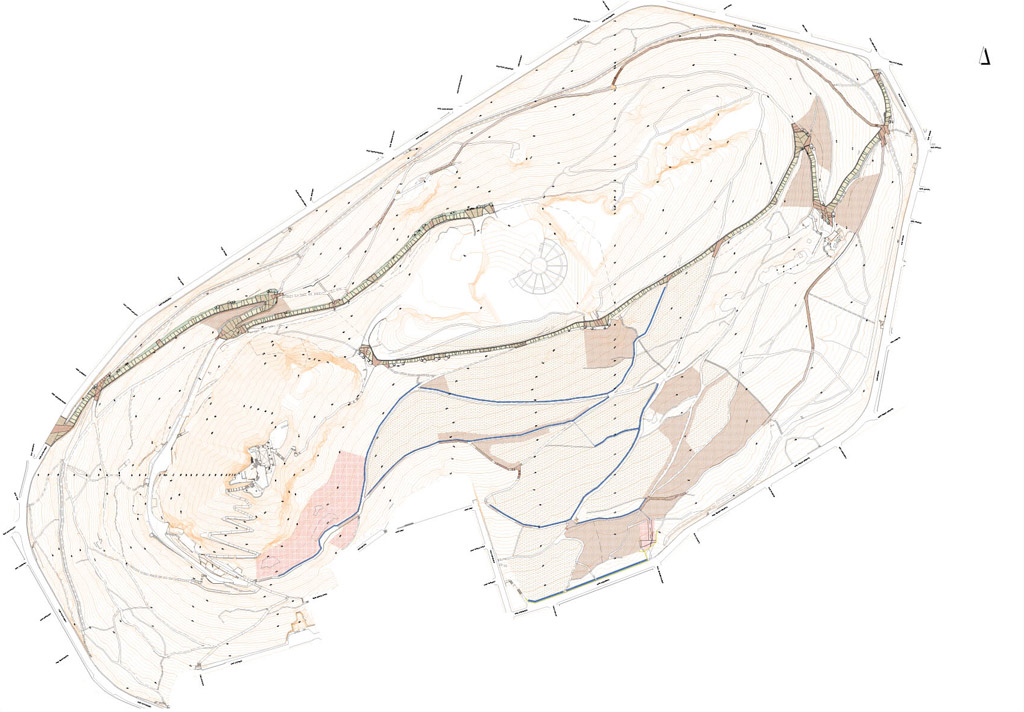
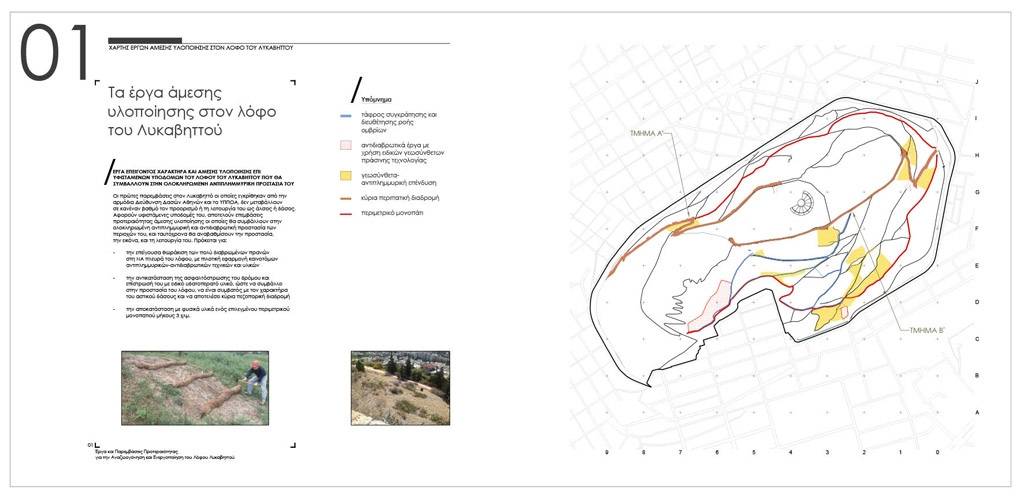
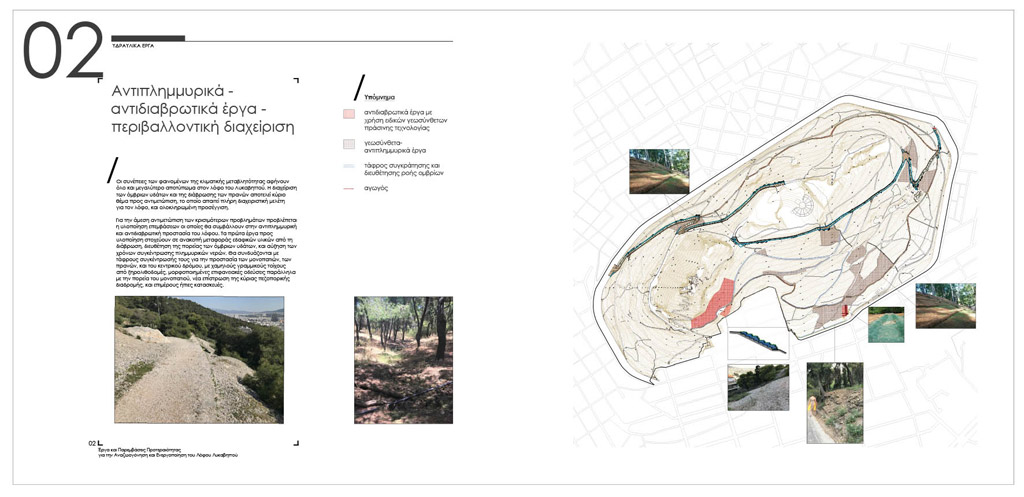
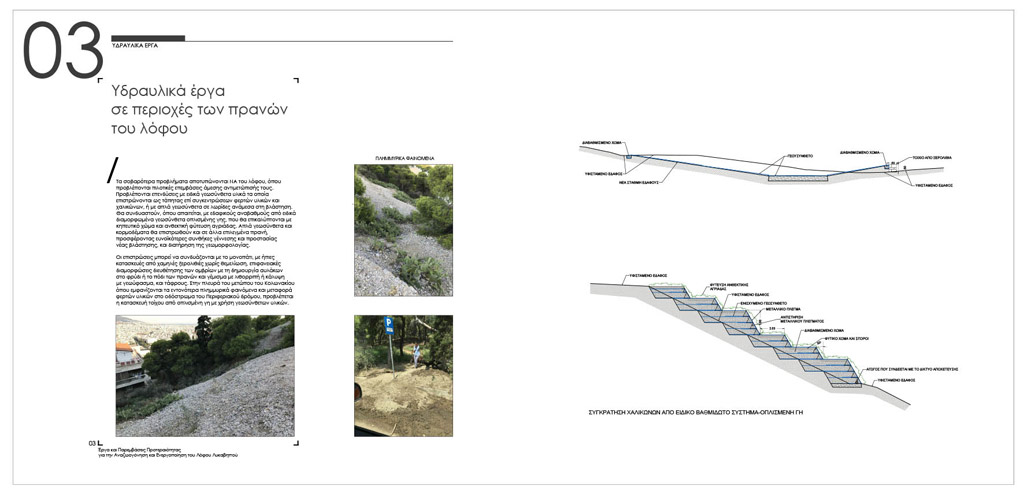
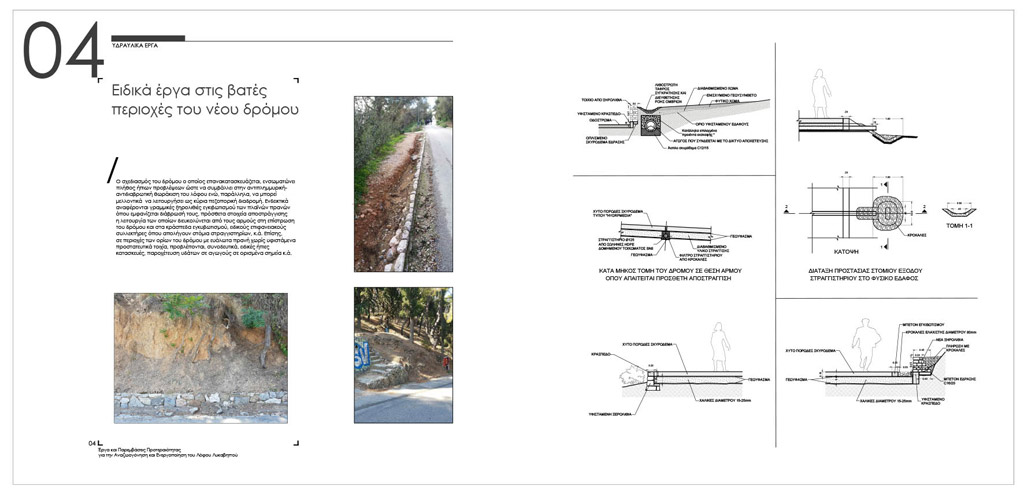
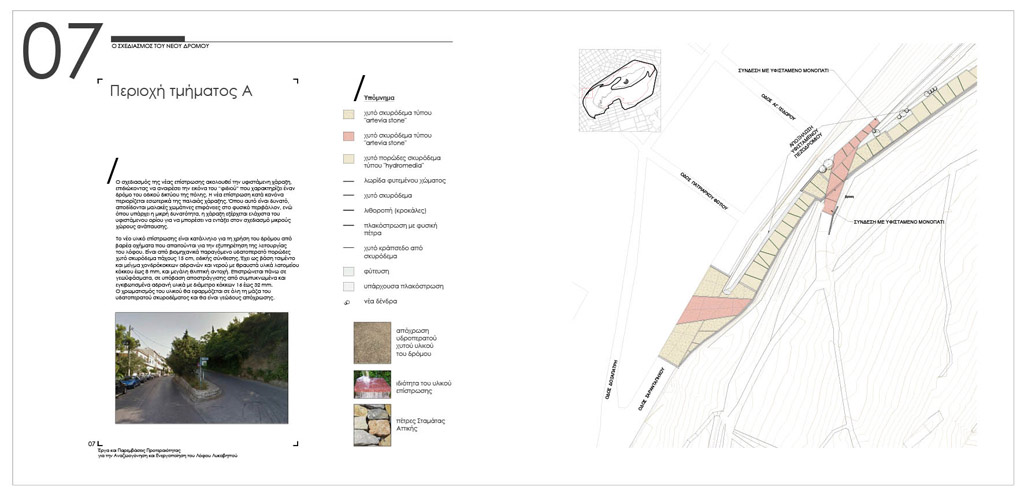
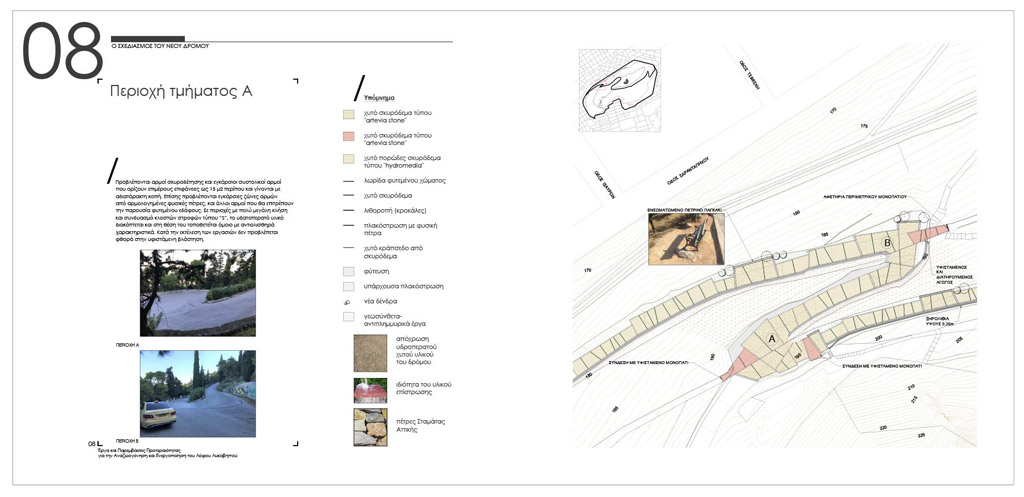
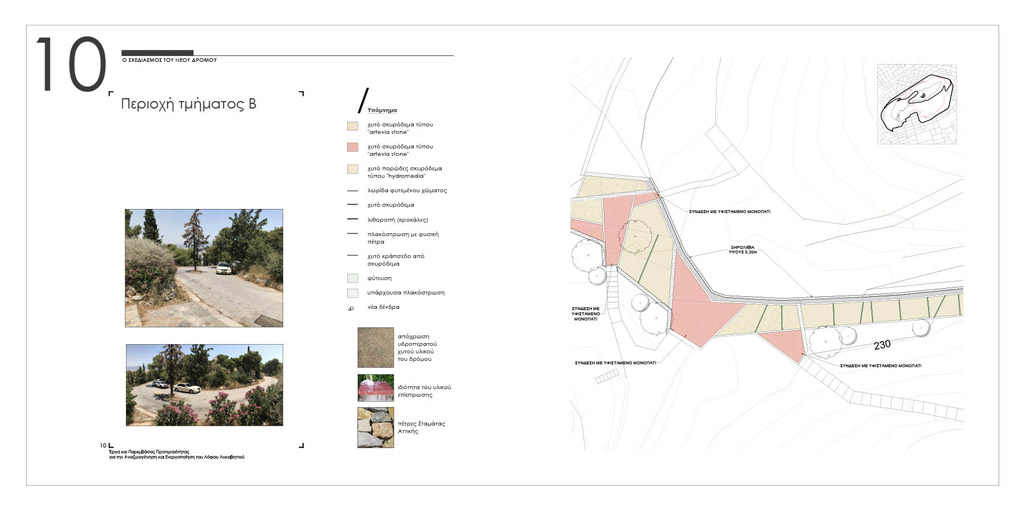
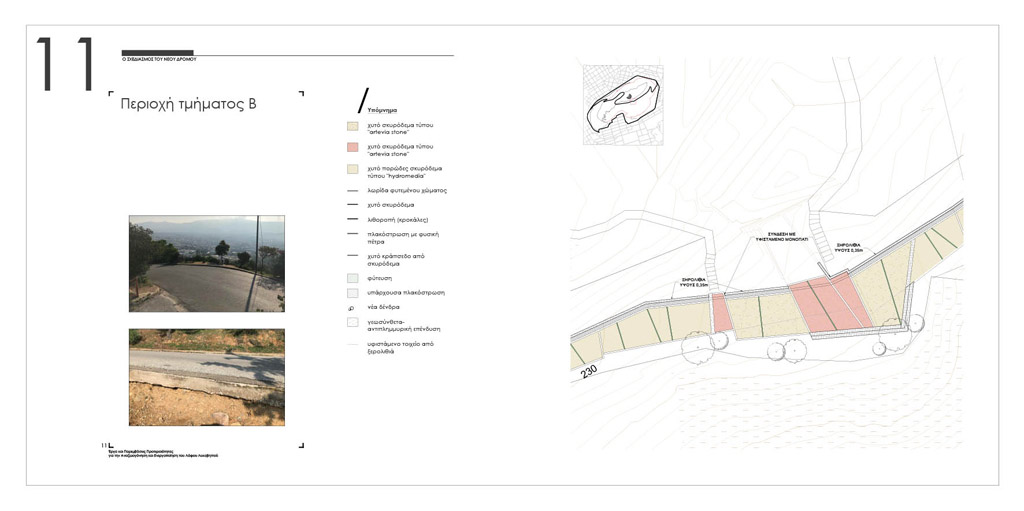
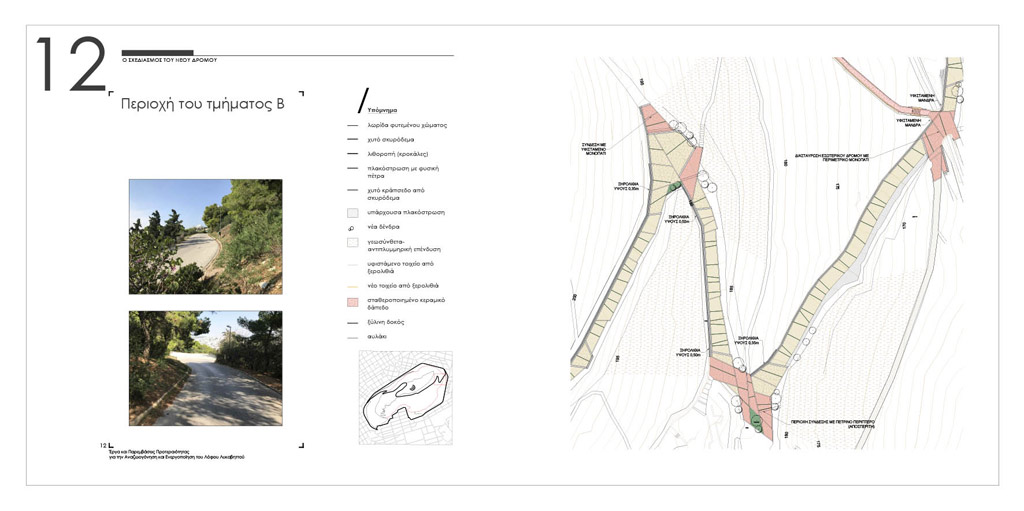
THE NEW PROJECTS ON LYCABETTUS HILL
Following a number of deliverables of the LYCABETTUS PROGRAM and a broad consultation with the public around the hill and stakeholders in the city, the more urgent of the strategic technical projects for the protection of the hill from flooding and for the enhancement of its resilience were prioritized, and were tendered by the new Administration of the Municipality of Athens. These regard the upgrade of existing infrastructures by using soft innovative techniques that will contribute to the protection of the hill against flooding while providing -at the same time- its enrichment, preservation, and an ecological modern urban environment.
Project Manager: Maria Kaltsa. Design: Technical Department of Athens Municipality-Direction of Public Spaces & Roadworks. Consultants: architects/D. Poulios-M. Anastasopoulou-E. Koutsopoulou, NAMA Consulting Engineers for water and environmental engineering, POLINDE-traffic engineers and transport planners, GRAMMIKI and E. Kakavouli-surveyors, E. Gialias-tender documents
3 priority technical projects are scheduled for implementation:
• Environmentally friendly anti-erosion/anti-flooding works in parts of the vulnerable SE Lycabettus slopes over the Gennadeios Library. This most urgent protective measure will mitigate flooding and serve as a pilot project that can be replicated in other Athenian hills. The project will make use of innovative, soft erosion and sediment control methods, and soil bioengineering using anchored biocomposite matting to cover and reinforce concentrations of scree and areas susceptible to further erosion and flooding. The matting will allow water penetration and will receive soil deposits to assist the establishment of vegetation and future planting. Low-height linear stone fences, silt socks and other features will be used, as needed, to manage stormwater runoff
• Replacement of the substructure and asphalt pavement of the hill's through-road. The new substructure and pervious concrete pavement will act as a hydraulic engineering infrastructure that will contribute to the hill's resilience against erosion and flooding. At the same time it will provide a new mobility ideal that is desired today for Lycabettus hill, giving priority to its protection as a green resource, to pedestrians, and uses that are compatible with the character of this central urban forest
• Rehabilitation of a prime 3 km long trail that traverses the hill along its lower perimeter. The trail will revive existing eroded paths that are easily accessible to people of all ages; it will be paved with stabilized earth containing ecological natural aggregates and substances, and will comprise amenities and structures that are necessary for its protection from stormwater runoff, and for easing its maintenance